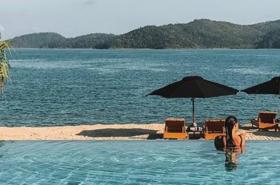With Japan’s long history steeped in tradition, unique culture and beautiful nature, it’s no surprise that it is home to sixteen World Heritage Sites. Allow us to introduce you to a few of the most memorable:
Shiretoko (Hokkaido)
Shiretoko, a peninsula located in north-eastern Hokkaido is considered to be the last pristine wilderness remaining in Japan. The Shiretoko ecosystem is a dramatically clear example of the link between marine and terrestrial ecosystems and it is considered an important wildlife reserve, with unique features unlike any other in the world.
Hiraizumi (Iwate)
Hiraizumi, located in the south-western part of Iwate Prefecture, prospered for almost 100 years from the 11th to 12th centuries as the centre of the Tohoku Region. Hiraizumi is home to over 3,000 national treasures, cultural attractions and historical sites, telling the story of the Fujiwara Clan that reigned during the height of its prosperity.
The Historic Villages of Shirakawa-go and Gokayama (Gifu and Toyama)
The remote mountain villages of gassho (thatched-roofed) houses in the Hida Highlands were registered as cultural heritage sites in 1995. The roofs on the gassho houses were cleverly built at a 60 degree angle to prevent the build-up of heavy snowfall.
The Shrines and Temples of Nikko (Tochigi)
Nikko is a sacred spot of the Edo Shogunate featuring intricate architecture surrounded by glorious nature. Toshogu Shrine is where Ieyasu Tokugawa was enshrined; he was the first shogun of the Edo Shogunate, which flourished between the 17th and 19th centuries.
Yakushima (Kagoshima)
Yakushima is an island off the coast of southern Kagoshima Prefecture. Due to its unique geography and climate, it is home to many rare animals and plants, including Yaku monkey, Yaku deer and most famous of all, Yaku sugi - a forest of Japanese cedar trees over 10,00 years old.
Hiroshima Peace Memorial and Itsukushima Shrine (Hiroshima)
Hiroshima Peace Memorial or Genbaku Dome is the remains of the former Hiroshima Prefectural Industrial Promotion Hall, which was destroyed when the first atomic bomb in human history was dropped on August 6, 1945. The site is a reminder of the tragedy and a symbol of prayer for world peace and the abolition of nuclear weapons.
Itsukushima Shinto Shrine is located on Miyajima, considered one of the three most scenic spots in Japan. The shrine is dedicated to the god who protects people from sea disasters and wars. The most distinctive feature is the red Torii (gate) in the sea which appears to float on the water at high tide.
Sacred Sites and Pilgrimage Routes in the Kii Mountain Range (Wakayama, Nara and Mie)
Yoshino and Omine, located at the northernmost part of the Kii Mountains, developed as a sacred place for Shugendo, a religion based on traditional mountain worship, Buddhism and Taoism in the 12th Century.
Kumano Sanzan is the name for a set of three Grand Shrines situated in the southeastern part of the Kii Peninsula: Kumano Hongu-taisha Shrine, Kumano Nachi-taisha Shrine and Kumano Hayatama-taisha Shrine. Nachi Falls is known as one of the highest waterfalls in Japan and as it is believed that touching the splash of the falls ensures long life, many tourists gather around the waterfall basin. Koyasan is a religious city on a mysterious mountaintop, home to over 100 temples. An overnight temple-stay is a truly Zen experience and highly recommended.
The ancient pilgrimage routes connecting these sites are called Kumano Kodo, one of only two World Heritage listed pilgrimage routes in the world.
- Travel Associates
#













